- Parisa Adhami
- information
- 315 views
- 0 comments
Canada Day, one of the most significant public holidays in the world, depicts the start of a wealthy and united country consisting of people from all over the world. Nova Scotia, New Brunswick, and the Province of Canada (modern-day Ontario and Quebec) were combined to form a new empire within the British Empire. Today, people celebrate their political and cultural unity, contributing to Canada's diversity.
Table Of Content
The Historical Significance of Canada Day
Canada Day has existed since Confederation was established on July 1, 1867. The provinces were formally merged into the Dominion of Canada by the British North America Act. John A. Sir. Canada's first prime minister, Macdonald, established this political union to lay the groundwork for a nation that would eventually stretch from the Atlantic to the Pacific. Dominion Day was the name given to Canada Day before 1982. The word "dominion," which was used in the Constitution Act to characterize Canada's relationship with the British Empire, is where the name originated. People eventually realized that the term "Dominion" did not fully capture Cadana Day and its independence, so the day's name was changed to the current.
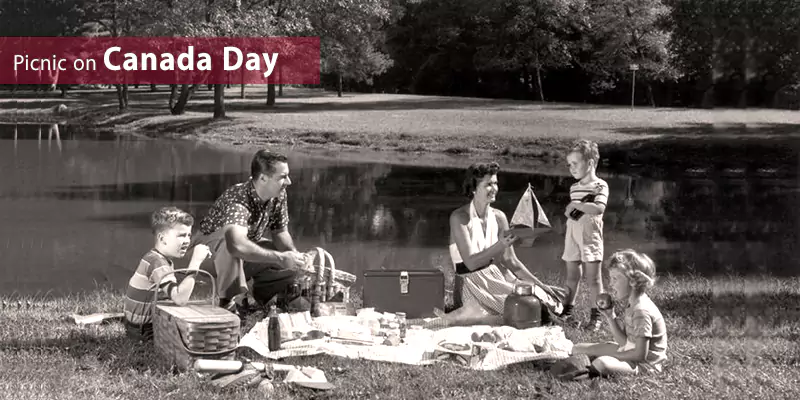
What People Do on Canada Day
On Canada Day, there are plenty of entertaining things to do. Large crowds from various countries can walk through a special parade that day. Along with other edible snacks, they can sample new cuisines connected to historical Canadian cuisine. Additionally, there are public parks where people can play thrilling games and sports and have picnics with their families. Many communities organize barbecues, picnics, and outdoor gatherings or visit the National parks in Canada, often followed by breathtaking fireworks displays at night. Museum displays provide chances to consider Canada's past, while cultural performances—such as Indigenous music and dance—highlight the nation's many cultures and histories.
The Date of Canada Day
Every year, on July 1st, Canada Day is celebrated to commemorate the annual celebration of the day when the regions of Canada, Nova Scotia, and New Brunswick were combined into one nation. After the Constitution was patriated, the holiday—called initially Dominion Day—was renamed Canada Day in 1982. This date is significant because it marks the start of modern Canada and creates the structure for its expansion as a unitary country. Canada takes pride in its history and identity by enjoying July 1st as a public holiday every year.
Cyrus Crafts; Luxury & Unique Products
Canada Day Parade
The Canada Day parade is a vibrant and colorful highlight of the national celebrations, showcasing the diverse culture and spirit of the country. In major cities like Ottawa, Toronto, and Vancouver, these parades feature a festive procession of floats, marching bands, dancers, and community groups proudly displaying Canadian flags and symbols. The parades often include participants in traditional costumes, Indigenous performances, and cultural displays that reflect the rich tapestry of Canada’s multicultural identity. Waving flags and cheering as the procession proceeds, spectators line the streets, fostering a sense of solidarity and pride that perfectly captures the spirit of Canada Day. Families and friends celebrate their shared heritage by going to the parade, a treasured tradition for many.
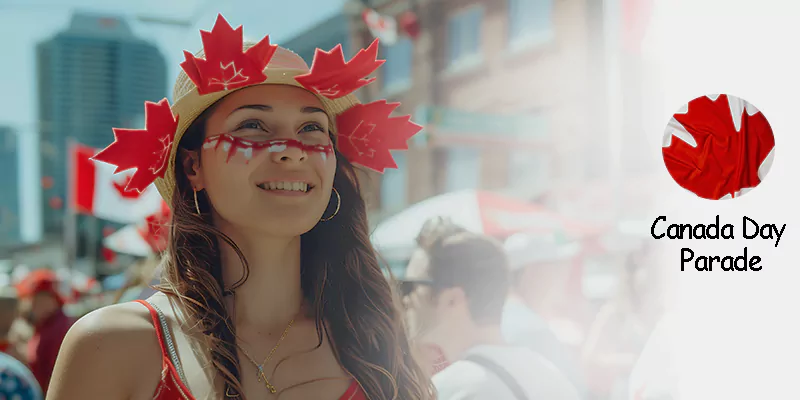
Canada Day Food
Eating a balanced diet and cuisines is one of the most amusing things on Canada Day. They frequently enjoy their celebration while eating a variety of drinks. Most of those dishes and drinks are prepared using a historical recipe, highlighting the Indigenous peoples of Canada's rich cultural heritage. Popcorn on the cob, potato salad, and poutine—a traditional Canadian dish of fries topped with cheese curds and gravy—are frequently served alongside grilled favorites like hamburgers, hot dogs, and steaks, a popular tradition in Canada.
Desserts also feature sweet treats, such as butter tarts, Nanaimo bars, and pastries flavored with maple syrup, which take center stage. Many enjoy picnics and outdoor feasts that highlight Canada's varied culinary traditions by featuring regional specialties and multicultural dishes.
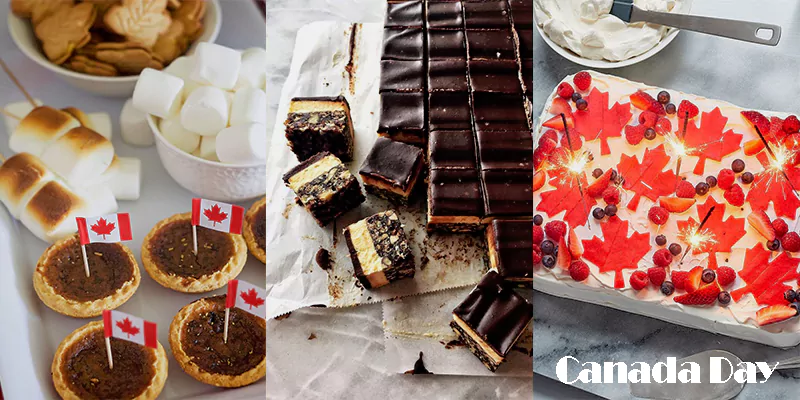
Here is more detailed information about "Canadian Cuisines" and everything you would like to know about it.
Canada Day Flag
Most citizens keep the Canadian flag during the Canada Day celebration, demonstrating national pride and unity. The Maple Leaf flag, which remains for peace and fairness, has a large red maple leaf in the middle with red borders on either side and a white background. For centuries, the maple leaf has been regarded as a sign of Canada, and its inclusion on the flag honors the nation's natural beauty and rich cultural legacy. Many Canadians show their national pride by wearing apparel or accessories with the identifiable maple leaf, and the flag is gone in parades, homes, and public areas nationwide on Canada Day.
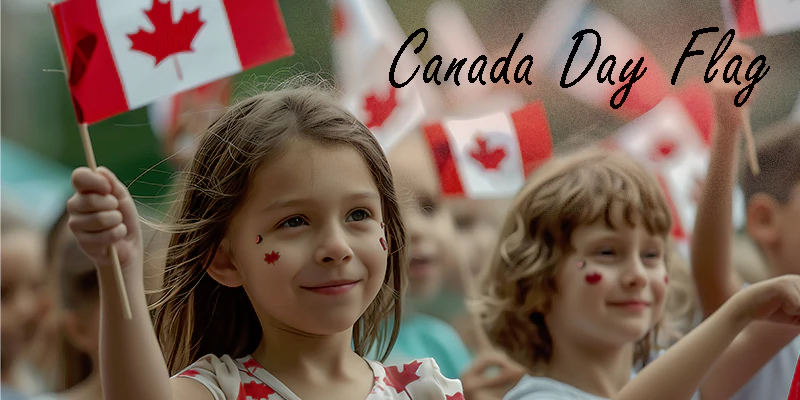
Environmental Stewardship and National Identity
Canada is renowned for its breathtaking landscapes, from the Rocky Mountains and vast prairies to pristine lakes and dense forests. Its natural beauty, such as its National parks or northern lights, is a source of pride and a central element of Canadian identity. On Canada Day, many people participate in outdoor activities like hiking, camping, or spending time in national parks.
Canada's government has protected natural parks and beauties for years, clearly showing its environmentally friendly policies. These areas, such as Banff, Jasper, and Nahanni National Parks, attract tourists to Canada annually. Although environmental problems have always existed in this nation, the federal government has taken steps to solve them, including investing in green technologies and committing to achieving net-zero emissions by 2050.
Some organizations use Canada Day to promote environmental causes, highlighting the value of protecting the nation's natural heritage. It is a day to respect both the necessity of preserving the environment for coming generations and the accomplishments of the past.
Canada Day Fireworks
Fireworks are one of the most anticipated highlights of Canada Day celebrations, lighting up the skies across the country in a dazzling display of color and spectacle. Big cities like Ottawa, Toronto, Vancouver, and Montreal host stunning fireworks displays that attract thousands of audiences on the evening of July 1st. Music, performances, and praising crowds frequently accompany fireworks, reflecting Canadians' joy and pride for their region. Local fireworks are also organized by smaller towns and communities, bringing Canadians from all over the country together under the starry night sky.
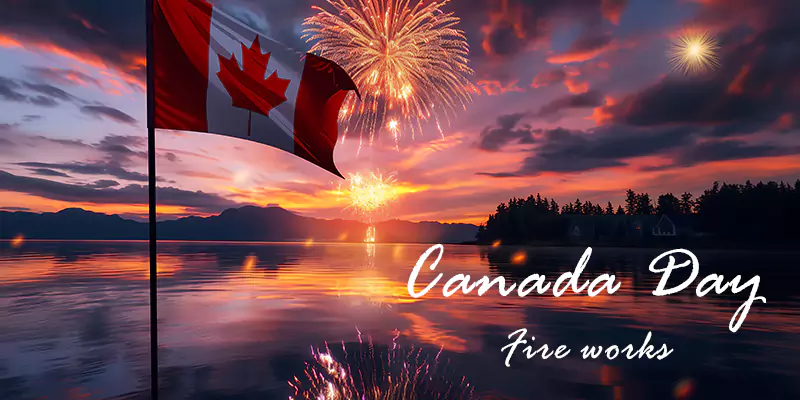
Last Words about Canada Day
The Canadian people celebrate the fantastic moment of a nation's birth. This celebration represents how the three provinces' national diversity has been brought together. It reminds people of their difficult past and the challenges they overcame. One notable feature of this celebration is the showcase of unity despite the nation's racial, religious, and ethnic diversity. It also proves people's commitment to the concept of equality. This nation will always aim to be more cohesive and better.








Comments (0)